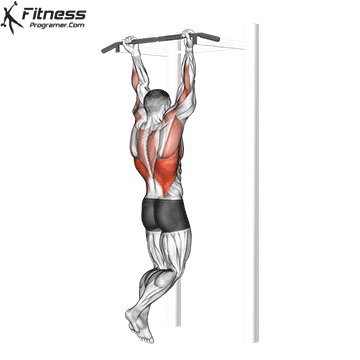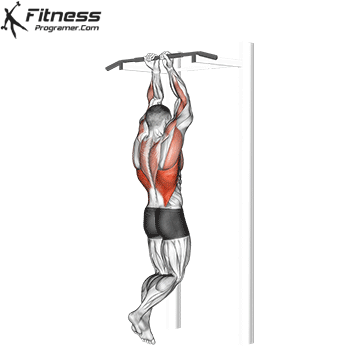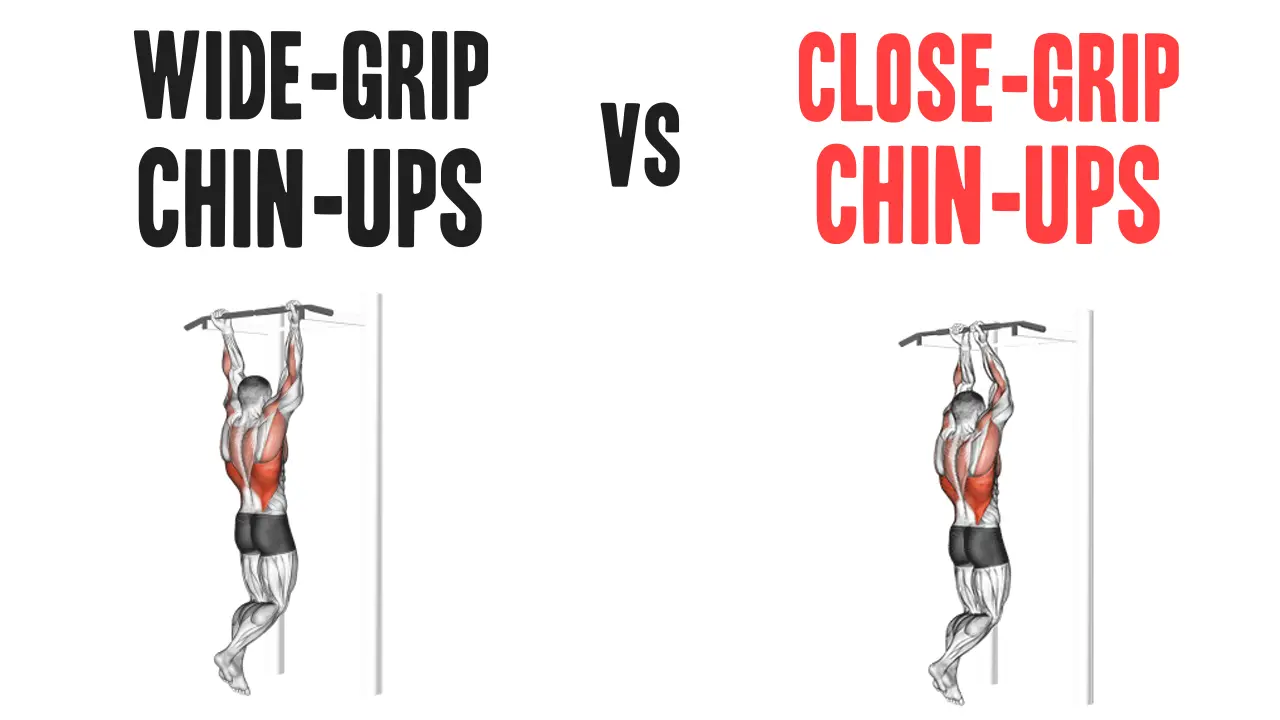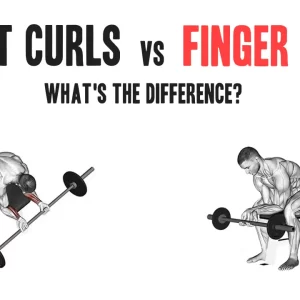Contents
- What’s the Difference Between Wide-Grip and Close-Grip Chin-Ups?
- Muscle Activation: Lats vs. Biceps
- Joint Comfort and Injury Risk
- Performance and Hypertrophy Outcomes
- Strength and Progression Considerations
- Programming Tips: How to Use Each Variation
- Common Mistakes to Avoid
- Conclusion: Which Chin-Up Grip Wins?
Chin-ups are one of the most effective upper-body pulling exercises—but minor changes in grip width can shift the muscular demand and affect joint comfort, muscle growth, and athletic performance.
This article compares wide-grip and close-grip chin-ups, focusing on:
- Muscle activation patterns
- Joint mechanics
- Hypertrophy and strength potential
- Programming recommendations
If you’re looking to optimize your vertical pulling, here’s what you need to know.
What’s the Difference Between Wide-Grip and Close-Grip Chin-Ups?
| Feature | Wide-Grip Chin-Up | Close-Grip Chin-Up |
|---|---|---|
| Grip Orientation | Supinated (palms facing you) | Supinated (palms facing you) |
| Grip Width | Wider than shoulder-width | Narrower than shoulder-width |
| Range of Motion | Slightly reduced elbow flexion | Increased elbow flexion and ROM |
| Joint Mechanics | More shoulder abduction, lat emphasis | More shoulder extension, biceps emphasis |
| Primary Focus | Lats, upper back | Biceps, forearms, elbow flexors |
Muscle Activation: Lats vs. Biceps
Wide-Grip Chin-Ups
- Emphasize latissimus dorsi, teres major, and rhomboids
- Reduced mechanical advantage for biceps
- Promote back width due to wider pulling angle
Close-Grip Chin-Ups
- Increase biceps brachii, brachialis, and brachioradialis involvement
- Elbow flexors have a greater range of motion
- More mechanical leverage favors higher reps and arm hypertrophy
Study Insight: EMG data (Signorile et al., 2010) shows close-grip chin-ups activate biceps significantly more than wide-grip pulling variations.
Joint Comfort and Injury Risk
Shoulder and Elbow Considerations
Wide-Grip Chin-Ups:

- Increase external rotation demands at the shoulder
- May aggravate elbow tendinopathy in lifters with poor supination control
- Less wrist-friendly if shoulder mobility is restricted
Close-Grip Chin-Ups:

- More natural elbow and wrist alignment
- Often preferred by lifters with joint sensitivity
- Easier to scale with resistance bands or assisted machines
If you have shoulder impingement history or wrist mobility issues, start with close-grip and progress slowly to wider grips.
Performance and Hypertrophy Outcomes
Which Builds Bigger Arms?
- Close-grip chin-ups are more effective for targeting the biceps, especially when loaded.
- Greater range of motion and elbow flexion equals more mechanical tension.
Which Builds a Bigger Back?
- Wide-grip chin-ups activate more of the upper lats, helping create back width.
- Combine with horizontal pulls for total back development.
Strength and Progression Considerations
| Attribute | Wide-Grip Chin-Up | Close-Grip Chin-Up |
|---|---|---|
| Strength Output | Lower (due to mechanical disadvantage) | Higher (easier leverage for more reps) |
| Skill Requirement | Higher—requires scapular control | Moderate—easier to master |
| Progression Options | Weighted pull-ups, tempo, drop sets | Easy to scale with reps, load, or band |
For beginners: Start with close-grip.
For advanced: Rotate both to challenge grip, back angle, and neural recruitment.
Programming Tips: How to Use Each Variation
Use Close-Grip Chin-Ups If You:
- Want to grow your biceps
- Are new to bodyweight training
- Have wrist or shoulder mobility limitations
- Need to increase pulling endurance (e.g. CrossFit, military prep)
Use Wide-Grip Chin-Ups If You:
- Want to target the lats and upper back
- Need variety in vertical pulling
- Are training for aesthetics (V-taper)
- Want to minimize biceps dominance
Training Split Example (Back & Arms Focus)
| Day | Exercise | Reps/Sets |
|---|---|---|
| Pull Day A | Wide-Grip Chin-Ups | 3-4 × 8–12 |
| Pull Day B | Close-Grip Chin-Ups | 3-4 × 8-12 |
| Arms Day | Chin-Up Isometric Hold | 3 × 20–30 sec |
Common Mistakes to Avoid
- ❌ Swinging or using momentum
- ❌ Flaring elbows wide in close-grip chin-ups
- ❌ Failing to depress scapula before pulling
- ❌ Shortening range of motion (chin not clearing bar or full lockout)
Focus on controlled tempo, scapular engagement, and clean reps for best results.
Conclusion: Which Chin-Up Grip Wins?
| Goal | Recommended Grip |
|---|---|
| Bigger arms | ✅ Close-Grip Chin-Ups |
| Wider upper back | ✅ Wide-Grip Chin-Ups |
| Joint-friendly pulling | ✅ Close-Grip Chin-Ups |
| Advanced lat isolation | ✅ Wide-Grip Chin-Ups |
| Versatile training option | ✅ Rotate both |
Bottom Line:
Both variations are powerful tools. The close-grip chin-up builds stronger, fuller arms. The wide-grip chin-up sculpts a wider, more impressive back. Rotate both to target different muscle groups and break plateaus.
References
- Signorile, J.F., et al. (2010). Electromyographic activity of selected trunk and hip muscles during traditional and modified pull-up exercises. Journal of Strength and Conditioning Research.
- Youdas, J.W., et al. (2010). Comparison of muscle activation during pull-up variations. JSCR.
- Schoenfeld, B.J. (2010). The mechanisms of muscle hypertrophy and their application to resistance training. JSCR.
- Lehman, G.J., et al. (2004). Shoulder muscle activity during pull-ups and lat pull-downs. Journal of Electromyography and Kinesiology.
- Anderson, G.S. (2002). Biomechanics of overhand and underhand grip pull-ups. Applied Ergonomics.



